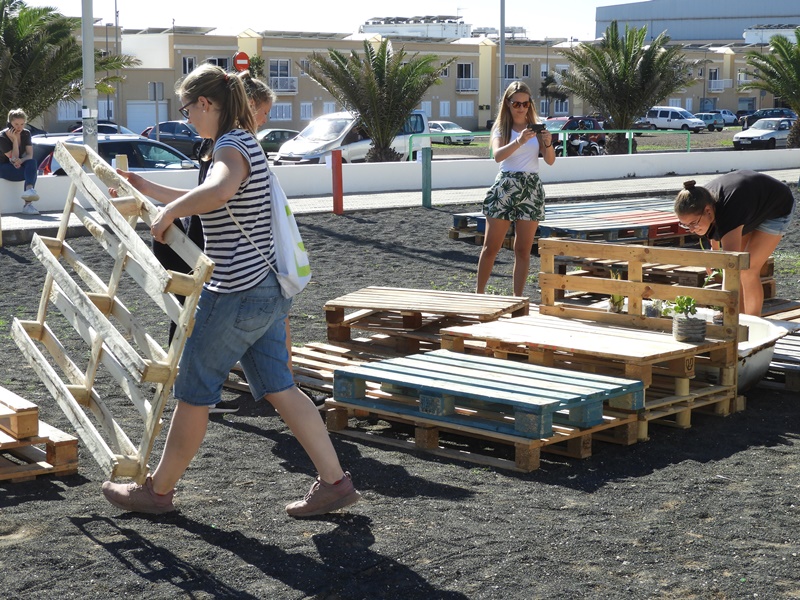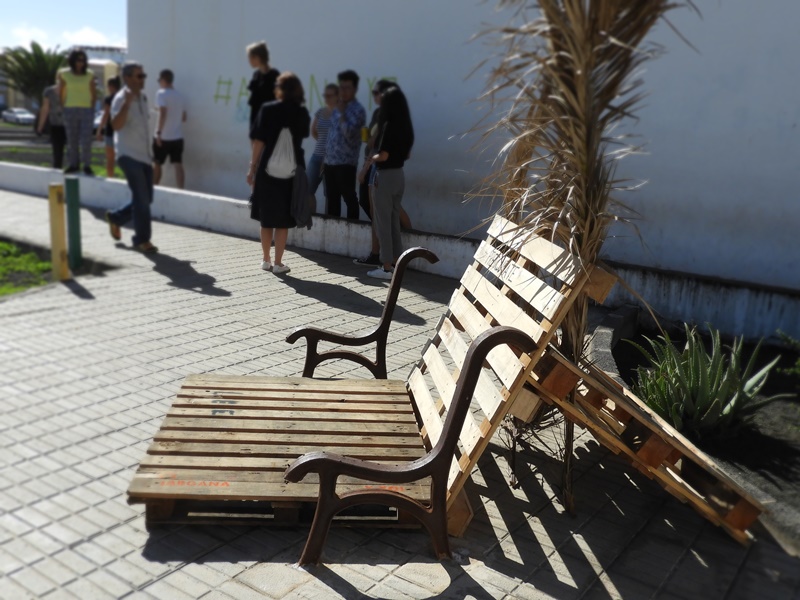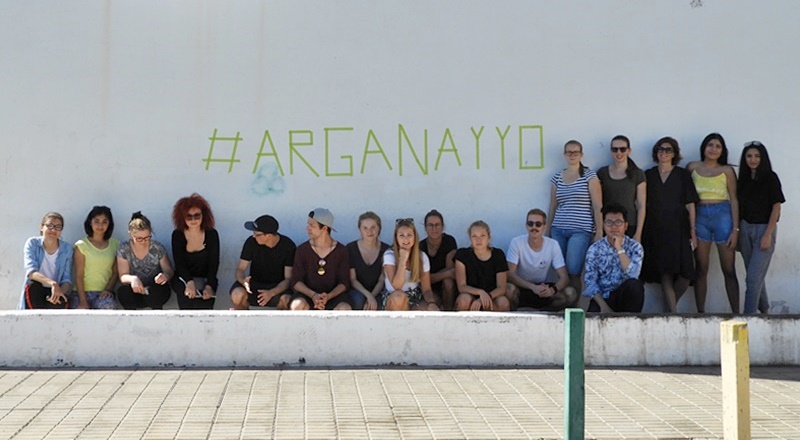Urban architecture to save neighborhoods
The astonished looks of the neighbors preceded the insistent questions about what they are observing. A ccrowd of young people have been walking the streets of their neighborhood for days, moving pallets and planks abandoned on lots and ordering them in such way they look like urban halls. The spaces created are strange to a place that, like many, lacks care. The ruined walls that surround the parks receive some color with a bright green adhesive tape in the form of words. On a wall you can read: Argana and me.
The people who are carrying those woods and ideas in their heads are students of Architecture of the Karlsruhe Institute of Technology. To come to the island, the trip has been paid for individually. This is the last of a three-years cycle in which they have been studying Arrecife as a pilot project to “rethink how a more ecological, more mobile, sustainable and CO2 neutral city could be achieved”.

This is how the project is defined by its director, Susanne Gersbertger. She is currently writing the doctoral thesis ‘Criteria and concepts declared for cities within Biosphere Reserves’. The idea of visiting the island and acting in it has its origin in the work of this teacher and researcher.
“Arrecife is one of the first cities within a Biosphere Reserve, and after 25 years of being it has not yet defined the criteria to be one,” explains Gersbertger. During the last two years, she and the students have developed their vision of the future for Arrecife drawing plans. This moment was chosen to make something visible of their work on paper through an Urban Lab.
MAB: the concept
Included in the architectural lexicon, the MAB concept (Man and biosphere) binds man and the Biosphere as one thing without the possibility of separation. They feed back in the same process.
The original idea of the study, as Gersbertger explains, is “to connect all the neighborhoods so that all the people have a space of mobility and can go walking or cycling towards the center and the coast”. This premise includes the need to rethink public transport to reduce car use.

The first day of work, the students walked 25 kilometers through the streets of Arrecife to recognize its atmosphere. For one of them, Huahua Zhang, it is the first time he does something like that outside his country “in a strange neighborhood for us where we had to understand the needs of the neighborhood to find the ideal places for the facilities”.
“We feel very welcome, the people are very kind,” explains the director. “The reaction is absolutely positive because the neighbors are very grateful to demand attention for their neighborhood,” she says.

Another of the students, Duygu Ozdemir believes that in this way they have managed to “get to know people, their thoughts and feelings, and the way they have to live with mass tourism”.
Susanne Gersbertger hopes that the results of the project that seek to redefine the concepts of Arrecife as a city within a Biosphere Reserve can be presented in the first half of next year. Until then the urban halls of Argana Alta will serve as a reminder of the need to improve the streets to improve the coexistence of the capital of Lanzarote.

